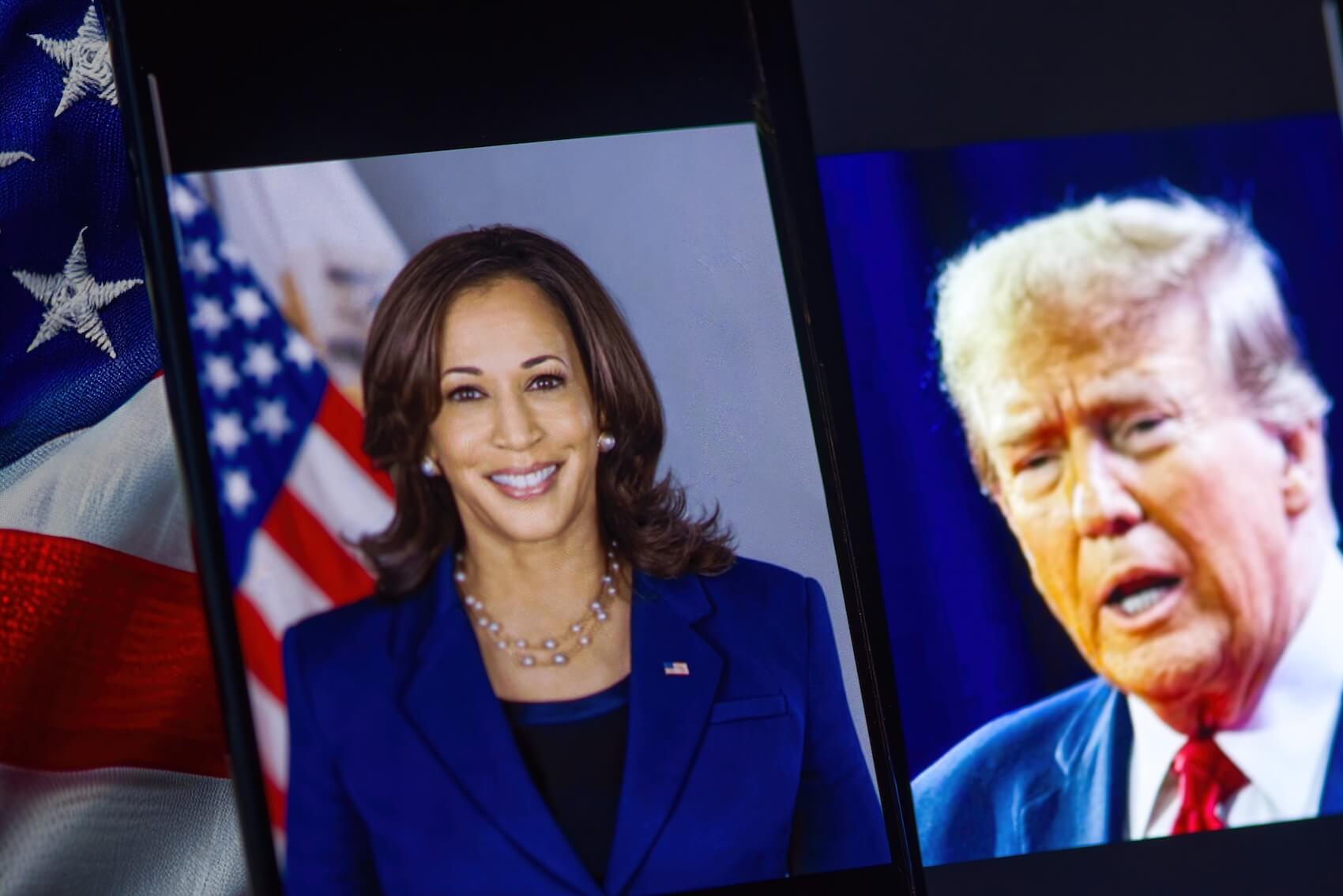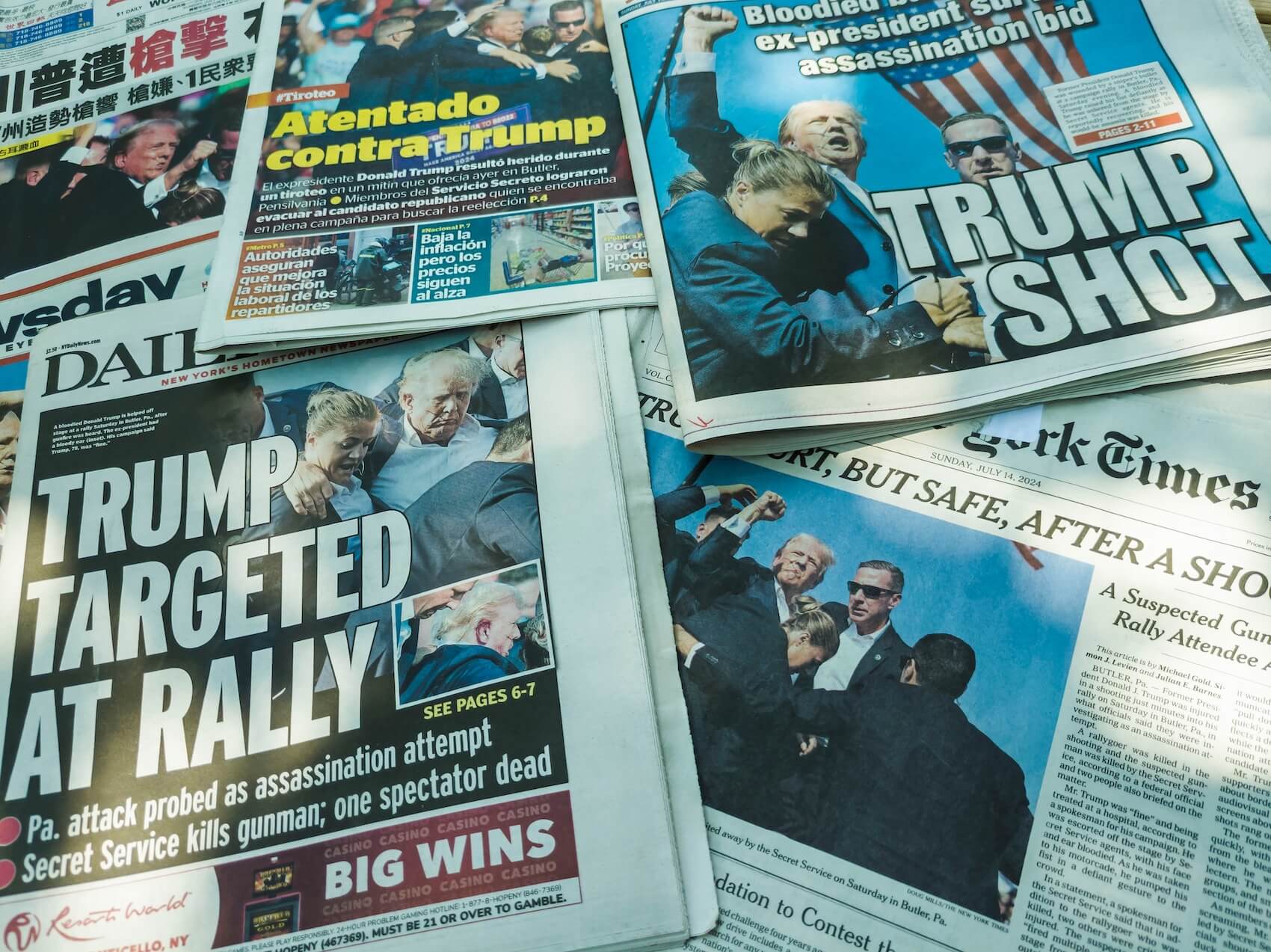Reflecting on the deeply polarized political landscape in the US, Professor Alan Abramowitz warns, “As we approach the 2024 election, there are signals that this polarization could again lead to violence, particularly if Trump loses the election.” His concerns stem from Donald Trump’s rhetoric, where Trump has already suggested that any loss would be due to fraud, effectively claiming the election would be stolen from him. Looking ahead to the 2024 election, Professor Abramowitz predicts a tight race, with Kamala Harris likely to win by a narrow margin. However, he cautions that the dynamics of the Electoral College could result in a repeat of 2016, where the popular vote and the electoral outcome diverge.
Interview by Selcuk Gultasli
In a compelling interview with the European Center for Populism Studies (ECPS), political scientist Dr. Alan I. Abramowitz, Alben W. Barkley Professor Emeritus at Emory College of Arts and Sciences, sheds light on the critical state of American democracy as the 2024 election approaches. Reflecting on the deeply polarized political landscape, Professor Abramowitz warns, "As we approach the 2024 election, there are signals that this polarization could again lead to violence, particularly if Trump loses the election." His concerns are grounded in the rhetoric of Donald Trump, who has already suggested that any loss would be due to fraud, effectively claiming the election would be stolen from him. "This kind of rhetoric raises serious concerns about the potential for another outbreak of violence," Abramowitz notes, emphasizing that while the events may not mirror January 6, the risk remains substantial, fueled by the provocative language of Trump and his allies, including his vice-presidential candidate, J.D. Vance.
Professor Abramowitz’s analysis highlights the unprecedented challenges facing American democracy. He points to the January 6, 2021, Capitol attack as a stark example of the violent potential of current political divisions, but he also expresses concern about other disturbing trends, including assassination attempts on former President Trump. These incidents, while rooted in complex motivations, are symptomatic of a nation deeply divided. "We tend to see things like that in times of deep division and polarization," Abramowitz observes, adding that the normalization of such extreme actions is a dangerous precedent.
Looking ahead to the 2024 election, Professor Abramowitz predicts a tight race, with Kamala Harris likely to win by a narrow margin. However, he cautions that the dynamics of the Electoral College could result in a repeat of 2016, where the popular vote and the electoral outcome diverge. "There’s a real possibility that Harris could win the national popular vote but lose the electoral vote," he states, underscoring the uncertainty and tension that will define the upcoming election.
Through his detailed examination of the current political climate, Professor Abramowitz provides a sobering assessment of the threats to American democracy. His insights offer a crucial perspective on the risks posed by heightened polarization and the potential consequences of another Trump presidency.

Here is the transcription of the interview with Professor Alan Abramowitz with some edits.
Trend Towards Heightened Polarization and Negative Partisanship to Continue
Professor Abramowitz, thank you very much for joining our interview series. Let me begin right away with the first question. In your work, you’ve emphasized the growing influence of negative partisanship in American politics, where voters are increasingly motivated by opposition to the other party rather than support for their own. You’ve particularly noted the significant role of racial resentment in shaping the voting behavior of white working-class voters in the 2016 election. Given the current demographic trends, how do you see this dynamic evolving in the upcoming 2024 election, especially considering the increasing diversity of the American electorate?
Professor Alan Abramowitz: Well, I believe we’ll continue to see a trend towards heightened polarization and negative partisanship. The polling data for the 2024 election already indicates this, and I expect we’ll see even more evidence as post-election data becomes available. It’s quite evident that the messaging from the two major party candidates, particularly from Donald Trump, is heavily focused on negative attacks. Trump emphasizes opposition to the other party, portraying figures like Kamala Harris as dangerously radical and painting the Democratic Party as being far to the left. Trump aims to depict Democrats as a threat to the way of life for ordinary Americans, particularly those who support him.
On the other side, we also see a fair share of negativity. While Harris’s messaging has included more positive elements as she introduces herself to the American electorate, given that she isn’t as well-known as Trump, there is still a substantial amount of negative content. This includes strong criticisms of Trump’s positions on various issues, as well as of Trump himself—his personality, behavior and the fact that he has been convicted of criminal behavior, among other things.
Given the negative attacks from both sides, the deep mistrust and the intense dislike that each side has for the opposing party and its candidates, I think we’re likely to see a continuation and possibly even an intensification, of this trend toward negative partisanship.
Polarization Could Lead to Violence If Trump Loses
Can you give us a historical perspective into periods of intense political polarization in US history? What was so different in the Trump presidency?
Professor Alan Abramowitz: We’ve certainly experienced periods of intense division and polarization in American history. The Civil War era is an obvious example—perhaps the most well-known—where the nation was deeply divided, especially over the issue of slavery, which ultimately led to several states seceding from the Union and resulted in a very bloody civil war.
Even earlier, the post-Revolutionary period was marked by intense polarization, with leaders of the two major parties at the time—the Democratic-Republicans and the Federalists—deeply mistrusting and disliking each other. However, the Civil War era stands out as a time when the country was so profoundly split that it led to an actual conflict.
In the last 20 to 30 years, American politics has entered another period of intense polarization. While this polarization has not resulted in a civil war, it has led to a significant rise in intense dislike and vilification of the opposing party and its leaders. Negative attacks against party leaders are common, and we also see a very divided media landscape, which exacerbates this polarization. Supporters of the two major parties often rely on different sources of information that reinforce their existing beliefs, leading to a lack of a common base of knowledge—something we had more of 30 or 40 years ago.
One of the most alarming developments from this polarization has been the outbreaks of violence. The most notable example is the January 6, 2021, attack on the US Capitol, where supporters of President Trump, incited by his rhetoric, stormed the Capitol and engaged in violent confrontations with law enforcement, resulting in numerous injuries and several deaths.
While that is the most obvious example, there have been other troubling signs, such as recent assassination attempts on former President Trump. Though the motives behind these attempts are not entirely clear, they reflect the intense divisions within the country.
As we approach the 2024 election, there are signals that this polarization could again lead to violence, particularly if Trump loses the election. Trump has already indicated that he may not accept the election results, claiming that the only way he could lose is through fraud, effectively saying that the election would be stolen from him. This kind of rhetoric raises serious concerns about the potential for another outbreak of violence. While it may not take the exact same form as the events of January 6, given that the federal government and security forces will be better prepared, the risk of violence remains significant, driven by the rhetoric of Trump and some of his political allies, including his vice-presidential candidate, J.D. Vance.
Your research mentions the role of partisan media in reinforcing negative partisanship. With the rise of social media and alternative news platforms, how do you see media influence evolving in shaping voter behavior? Are there any interventions that could mitigate the polarizing effects of media?
Professor Alan Abramowitz: The media environment today remains highly polarized. We see that supporters of Republican and Democratic candidates generally receive their information from very different sources. For example, supporters of Vice President Harris and other Democratic candidates tend to rely on mainstream media outlets, such as the major news networks and CNN, as well as outlets with a clear liberal slant, like MSNBC. In contrast, supporters of former President Trump and other Republican candidates disproportionately get their information from sources with a strong conservative slant, particularly Fox News, but also from other online platforms like Newsmax and similar sites with a clear conservative bias.
This creates an environment where voters’ perceptions and views of the election and the candidates are continually reinforced by the media messages they consume. This is especially true with right-wing media outlets, where Fox News plays a significant role, but even more extreme sources are also contributing. A concerning aspect of this is the spread of misinformation, which we currently see disproportionately coming from the right in the United States. This misinformation includes false claims, such as those advanced by Trump about the 2020 election being stolen or the dangers posed by immigrants—claims that are not only untrue but also potentially dangerous.
While there is certainly slanted news coverage from some media outlets on the left, such as MSNBC and other liberal-leaning platforms, we don’t see the same level of misinformation, particularly the kind that could incite violence, to the extent that we do on the right. The intensity and potential consequences of misinformation from right-wing sources are far more pronounced.
‘Electoral College Roulette’ Could Result in a Repeat of 2016

You argue that Donald Trump’s victory in the 2016 presidential election was one of the most shocking upsets in American electoral history. Can you elaborate on why you describe it as one of the most shocking?
Professor Alan Abramowitz: Well, heading into the 2016 election, the available polling data indicated that Hillary Clinton was a strong favorite. Nationally, she appeared to have a solid lead and she was also ahead of Trump, albeit by a narrow margin, in almost all of the key swing states that would ultimately decide the election in the Electoral College.
However, the outcome defied these expectations. The polls in several crucial swing states, particularly Wisconsin, Michigan and Pennsylvania, were off, showing Clinton with a lead of 2 to 4 points when, in reality, those states swung to Trump by narrow margins. These unexpected shifts in the swing states are what ultimately tilted the Electoral College in Trump’s favor.
This situation highlights a phenomenon I refer to as "Electoral College roulette." When the national popular vote margin is relatively close—within 2, 3 or even 4 points—the election’s outcome hinges on a small number of swing states. This was true in both 2016 and 2020. Even though Joe Biden won the national popular vote by about 4.5 points in 2020, which would normally suggest a comfortable victory in the Electoral College, his actual Electoral College margin was much narrower due to the close results in those same swing states—Michigan, Wisconsin, Pennsylvania, Georgia, Arizona, Nevada and North Carolina. These are the same states likely to determine the outcome in the next election.
As we approach the 2024 election, Kamala Harris appears to have a modest lead nationally—about 3 points on average. But, as in 2016, the margins in the key swing states are extremely tight, making the outcome unpredictable. Harris could potentially win the popular vote by a comfortable margin, yet Donald Trump could still emerge as the winner in the Electoral College. So, while we’re not predicting this outcome, there’s a significant chance that something similar to 2016 could happen again.
Do you consider Trump’s presidency (2016-2020) caused irreparable damage to American democracy?
Professor Alan Abramowitz: Yes, I believe Trump’s presidency has inflicted significant damage on American democracy. In modern times, no other defeated presidential candidate has refused to accept the results of an election to the extent that Trump did. Not only did he refuse to concede after the election, but he also actively sought to overturn the results. He encouraged his supporters in swing states to challenge the election outcomes, pushed for the creation of slates of false electors in several of those states and, most notably, incited the violent attack on the US Capitol on January 6, 2021.
These actions were unprecedented in modern American history. We have never seen a defeated presidential candidate behave in this manner. And now, as we approach another election, Trump is once again signaling that he might refuse to accept the results if he loses. His rhetoric often includes violent language, raising concerns that he could incite his supporters to act violently if the election doesn’t go his way.
While the deep divisions in American society and politics didn’t begin with Trump, they have certainly been exacerbated by him. Over the past several decades, the two major parties have grown increasingly divided along ideological lines, with highly emotional and divisive issues like abortion and gay rights, in addition to traditional economic issues, fueling this conflict. Trump capitalized on these divisions to gain control of the Republican Party and win the presidency in 2016. His presidency, and now his post-presidency, particularly the type of campaign he’s running for 2024, have further deepened these divisions, greatly increasing the risk that they could lead to violence.
Trump’s Rhetoric Marks a Significant Shift from the Republican Party’s Traditional Stance
Can you explain how racial resentment, negative partisanship and polarization under Trump’s presidency shaped the US politics and democracy?
Professor Alan Abramowitz: One of the key factors behind Trump’s appeal to a significant segment of white working-class voters in the United States is the dramatic transformation the country has been undergoing over the past several decades, particularly in terms of its racial and ethnic makeup. The US population is becoming increasingly diverse and the proportion of non-Hispanic whites in the population—and the electorate—has been steadily declining. It’s projected that within the next decade or two, non-Hispanic whites will make up less than 50% of the population, a threshold already crossed in several states like California and Texas.
This demographic shift is perceived as threatening by some members of the white population, which is no longer growing and may soon begin to decline. There’s a fear among this group that the country is being taken over by people who do not look like them or share their values. Trump has capitalized on these fears, using them to deepen divisions and present them as existential threats.
For instance, when discussing immigration, Trump often portrays immigrants in a highly negative light, characterizing them as criminals or individuals coming from prisons and mental institutions who are taking over cities and contributing to high levels of violence. He has even made outlandish and entirely false claims, such as Haitian immigrants in Ohio killing and eating people’s pets. Despite the absurdity of these claims, Trump continues to promote them and his vice-presidential candidate, J.D. Vance, along with other Republican figures, either echo these falsehoods or refuse to contradict them.
These kinds of divisive and fear-mongering messages resonate with a significant, though not majority, portion of the American electorate—those who score high on measures of racial resentment. Racial resentment in this context isn’t just about attitudes toward African Americans; it’s also about anxiety over the broader transformation of American society, particularly as it relates to immigration. Over the last several decades, the US has seen a large influx of immigrants, which has caused strains similar to those observed in Europe. Trump and other right-wing populist leaders have exploited these fears, portraying immigration as a threat to the economic well-being, values and even physical safety of the formerly dominant white population, especially those with lower levels of education.
This rhetoric marks a significant departure from the Republican Party’s stance 30 or 40 years ago. Even conservative politicians like Ronald Reagan did not talk about immigration in such negative terms. Historically, the Republican Party had a more favorable stance toward immigration, but under Trump’s influence, this has dramatically changed, with racial resentment and negative partisanship becoming central elements of the party’s messaging.
Given your concerns about the risks of democratic backsliding in the United States, particularly under the influence of increasing polarization, what specific institutional reforms do you believe could help strengthen democratic norms and reduce the likelihood of further erosion?
Professor Alan Abramowitz: Some important steps have already been taken, such as the reforms enacted to improve the process of counting the electoral vote, aiming to ensure that it occurs more smoothly and is less vulnerable to the kinds of attacks and disruptions we witnessed after the 2020 election. However, additional measures are necessary, particularly at the state and local levels, to further safeguard our democracy.
Protecting election workers, ensuring that elections are conducted safely and guaranteeing that votes are counted accurately are critical steps. Additionally, efforts to counteract the threat of violence during the election process are essential.
In the longer run, one significant reform that could help minimize the chances of disruptions would be to abolish the Electoral College entirely and move to a direct popular election of the President. This is something the US has come close to considering in the past, but it now seems quite distant. Establishing a more direct connection between the popular vote and the choice of the President would, in my view, reduce the opportunities for manipulation and attacks on the democratic process, as we’ve seen in recent elections.
New Assassination Attempts Could Potentially Target Leaders on Both Sides

Do you attribute the reason of two assassination attempts on Trump to the affective polarization in American politics? What role did Trump play in deepening the polarization?
Professor Alan Abramowitz: Yes, I believe Trump has been a significant factor in deepening polarization, particularly through his rhetoric. He has heavily emphasized portraying the opposition party and its leaders as existential threats to democracy and to the way of life of his supporters. This has greatly exacerbated the divisions that were already present in American society.
It’s difficult to say exactly what motivated the individuals behind the assassination attempts, but such actions tend to occur during times of deep division and polarization. Trump is undeniably a very divisive and polarizing figure, but we shouldn’t assume that future assassination attempts will be limited to him. Once the idea takes hold that it’s possible to target and attempt to kill a political leader, it could potentially happen to leaders on either side of the political spectrum.
This is a very dangerous situation and it underscores the importance of ensuring adequate security for political candidates. There have been efforts to enhance security measures to protect candidates when they are in public, but it’s worth noting that the United States has a long history of assassination attempts, some of which have been successful, dating back many years. What’s new is the sophistication of the weaponry available today. The accessibility of high-powered, military-style weapons increases the risk because someone no longer needs to be in close proximity to carry out an assassination. As we’ve seen in these recent attempts, an assailant could potentially strike from several hundred yards away if they have a clear line of sight.
There are pundits who argue that a second Trump administration will damage more seriously the American democracy than the first one. Where do you stand in this debate?
Professor Alan Abramowitz: I absolutely agree with that assessment. We’re already seeing clear signs from Trump and his supporters indicating that a second Trump administration would involve serious attempts to undermine American democracy. During his first term, Trump made efforts to target his political opponents, even pushing for their prosecution. However, he was often restrained by key individuals around him, including his own advisers, the Attorney General and the heads of agencies like the FBI, who refused to carry out his more extreme demands.
In a second Trump presidency, I believe this restraint would be far less likely. Trump and his allies have been actively seeking individuals who would be more willing to go along with his wishes, individuals who would not stand in his way if he returned to the White House. His primary motivation seems to be revenge—against his political enemies—and I think he would be much less restrained in pursuing that agenda.
There’s a very real risk that we could see serious attempts to prosecute individuals simply for opposing Trump politically. This threat wouldn’t just be limited to leaders of the opposition party but could also extend to media outlets that have been critical of Trump.
Harris Is Expected to Win the Election by a Very Narrow Margin
There are institutions like V-Dem which argue that American democracy may not survive a second Trump administration? What will happen to American democracy and its liberal order if Trump re-elected on November 5?
Professor Alan Abramowitz: As I mentioned earlier, there’s a great risk that a second Trump administration would seriously undermine American democracy. This could manifest in attempts to erode free and fair elections and misuse the powers of the presidency and the executive branch to target political opponents and intimidate those who oppose him.
While I believe there would be strong pushback against such efforts—it’s unlikely these actions would be met with passive acceptance—the potential consequences are worrisome. One of the biggest risks is that this situation could escalate into some form of violence, which is a deeply concerning prospect.
It’s difficult to predict the exact outcome, but I don’t necessarily believe it would mean the outright end of American democracy. However, it would certainly pose serious threats to the integrity of our elections, the Justice Department and other key government agencies. These institutions could become highly politicized, which would undermine their ability to function independently and effectively.
For instance, even something like the Federal Reserve, which is supposed to operate independently, could be at risk. Trump has indicated a desire to exert control over the Federal Reserve, preferring someone who would follow his directives rather than making independent decisions about critical issues like interest rates. It could have severe implications for the future of the American economy.
You accurately predicted the result of the 2020 presidential election by modifying the time-for-change model. What is your prediction for the upcoming November 5 election, perhaps using the incumbent-referendum model?
Professor Alan Abramowitz: In fact, I have used the original model to predict both the popular vote and the electoral vote for the upcoming election. According to my prediction, Kamala Harris is expected to win the election by a very narrow margin—somewhere between 2.5 and 3 points in the national popular vote, and with 280 to 290 electoral votes. This is a close margin, which means there is a significant amount of uncertainty in the prediction. When you have a margin this tight, whether in a poll or a forecasting model, it’s difficult to have a high degree of confidence in the outcome.
I would say the chances are better than 50-50 that Kamala Harris will win, but not significantly higher than that. If we were choosing the president based solely on the national popular vote, I would estimate a 90% chance of Harris winning. However, since the election is decided by the Electoral College and given that the swing states are more competitive than the nation as a whole, there’s a real possibility that Harris could win the national popular vote but lose the electoral vote. I’m not predicting that this will happen, but I do think there’s a reasonable chance it could.


